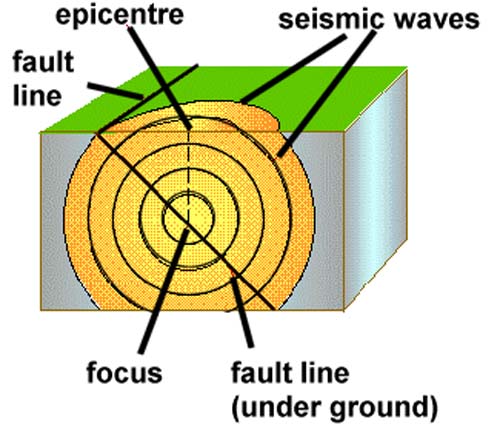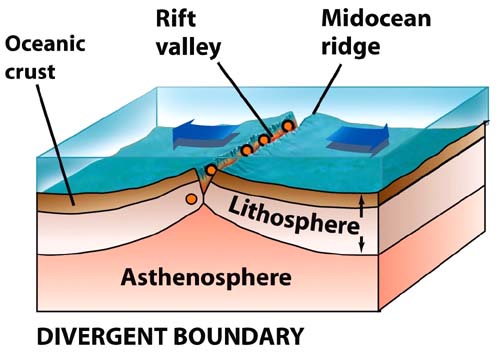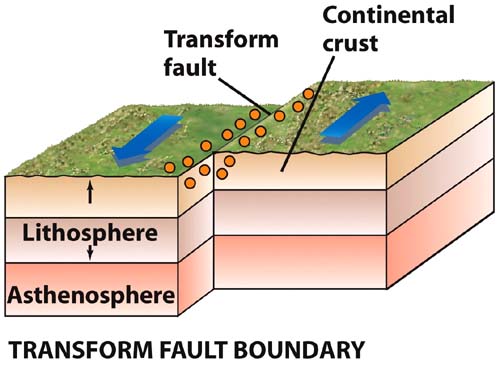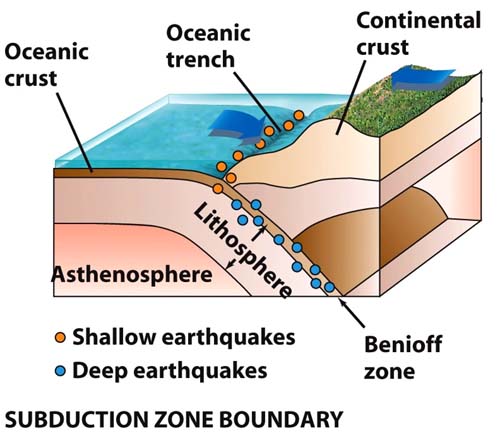Plate Tectonics, Earthquakes and Volcanoes
| Plate tectonics, earthquakes and volcanoes are closely related. In fact because of the behavior of earthquakes and volcanoes the core of the theory of plate tectonics has been proved. Earthquakes and volcanoes also allow geoscientists to indirectly study the interior of the earth. | ||||||||||||||||||||||||||||
 |
||||||||||||||||||||||||||||
|
Map
showing the global distribution of earthquakes.
|
||||||||||||||||||||||||||||
|
Over a million earthquakes happen annually, including those too small to be felt. The table below shows the average frequency of different magnitudes.
|
||||||||||||||||||||||||||||
|
About 80,000 earthquakes happen every month, about 2,600 per day, 2 earthquakes per minute, and one earthquake happens every 30 seconds. |
||||||||||||||||||||||||||||
| Individual plates of varying size move about the surface of the Earth at varying speeds. Friction causes the plates to get stuck. This causes pressure to build up. When this stress is realeased an earthquake will occur. Where plates pull apart, slide by each other or collide, there is tectonic activity manifested as earthquakes. The great majority of seismicity on the planet occurs at plate boundaries, although intra-plate seismicity can occur as well when stresses build up in the plate. |
 |
|||||||||||||||||||||||||||
|
At divergent plate boundaries, earthquakes tend to be weak and shallow. |
 |
|||||||||||||||||||||||||||
| Transform plate boundaries, have shallow, but very powerful earthquakes. |
 |
|||||||||||||||||||||||||||
| At convergent plate boundaries, where two continental plates collide earthquakes are deep and also very powerful. |
 |
|||||||||||||||||||||||||||
| In general, the deepest and the most powerful earthquakes occur at plate collision (or subduction) zones at convergent plate boundaries. |
 |
|||||||||||||||||||||||||||
 |
 |
Brooklyn College - Geology Department